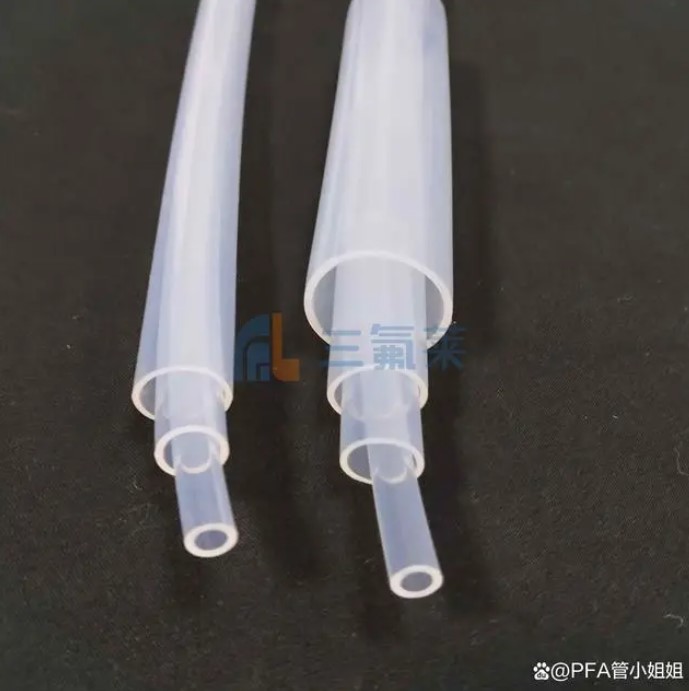What exactly is PFA?
PFA is an improved (modified) version of polytetrafluoroethylene, popular point, is upgraded on the basis of PTFE. It adds some special chemical components (such as PMVE, PEVE, PPVE, etc.), which makes PTFE that cannot be melted and processed can flow and shape. This process is like a "softening" of PTFE, and the modified PFA material can be pinched into various shapes like plasticine when heated. This improvement allows PFA to have a lower melting temperature, greater durability and resistance to deformation, especially the ability to recover after bending or stretching. Although its cost is much higher than PTFE, it is popular in high-end fields such as the semiconductor industry because it can maintain excellent performance at high temperatures and is easy to process.
The principle of PFA pipe extrusion molding process
Sanfulai PFA pipe fittings are extruded by feeding solid PFA resin particles into specially designed extruders where, after heating to its melting temperature, the resin is converted into a slurry with good flow. With the help of the rotary push action of the screw, the PFA melt is extruded from the die mouth under the action of pressure, and is cooled and cured quickly in the setting device to form a continuous tubular structure. In this process, the design of the mold directly affects the dimensional accuracy and surface quality of the final pipe fitting.

PFA pipe extrusion production process
The specific steps of Triflle's production of PFA fittings include: first, the raw material PFA resin is pre-treated and dried to ensure that there is no impurity water; Secondly, the dried resin is put into the hopper of the extruder, transported by the heated screw and melted and mixed evenly; Then, the molten PFA is extruded into a tubular shape by a precision mold, and is cooled quickly by a cooling tank. Finally, after cutting, inspection, packaging and other subsequent processes, the production of high-quality PFA pipe products. The entire production process requires strict control of temperature, pressure and speed parameters to ensure stable product quality.
The influencing factors of PFA pipe extrusion molding process
The factors affecting the extrusion effect of triflurai PFA pipe fittings mainly include the following aspects:
1, raw material quality: the purity of PFA resin itself, particle size and additive content directly affect the quality and performance of extruded products.
2, extrusion temperature: too low will lead to poor material flow, can not be successfully extrusion; Too high may cause resin decomposition or physical property decline.
3, screw speed and feed amount: it needs to be precisely matched to ensure the residence time and shear mixing efficiency of the molten material in the extruder.
4. Mold design and status: the geometry, dimensional accuracy and surface finish of the mold are crucial to the uniformity of pipe wall thickness, inner and outer diameter accuracy and surface quality.
5, cooling speed and mode: The appropriate cooling speed helps to improve the mechanical properties and dimensional stability of the product, to avoid stress concentration or deformation caused by uneven cooling.
Sanfulai, high-end fluorine plastic products manufacturer. Supplier of high purity PFA tubes for semiconductor factories、
This article is originally written by Sanfulai. For more information please subscribe to our channel!